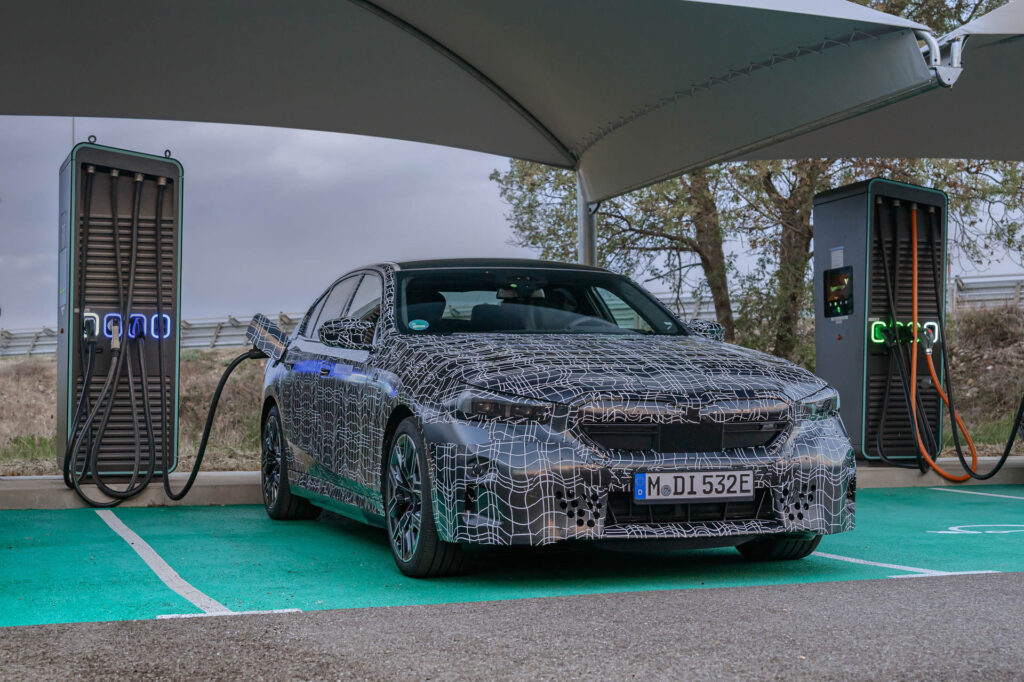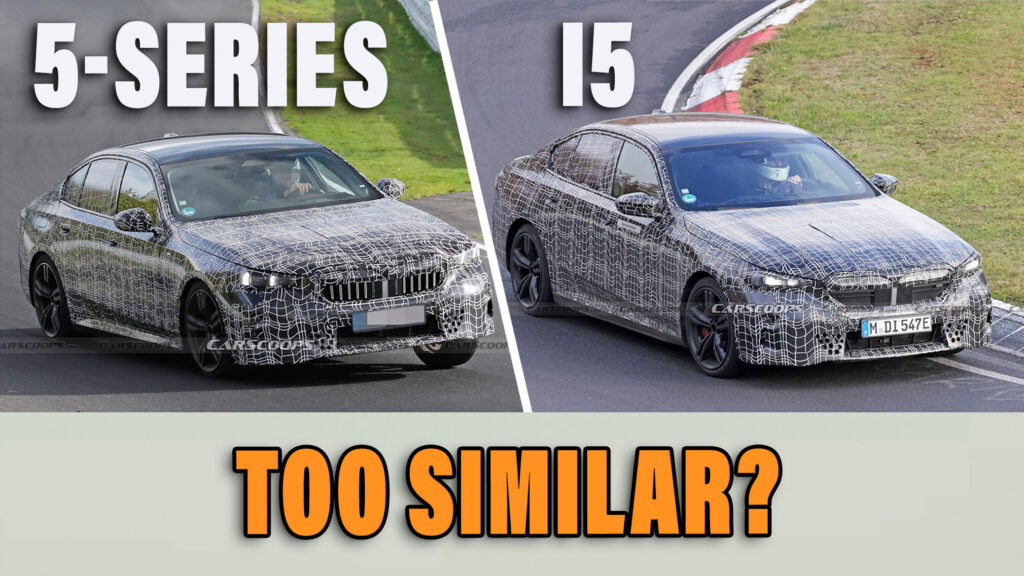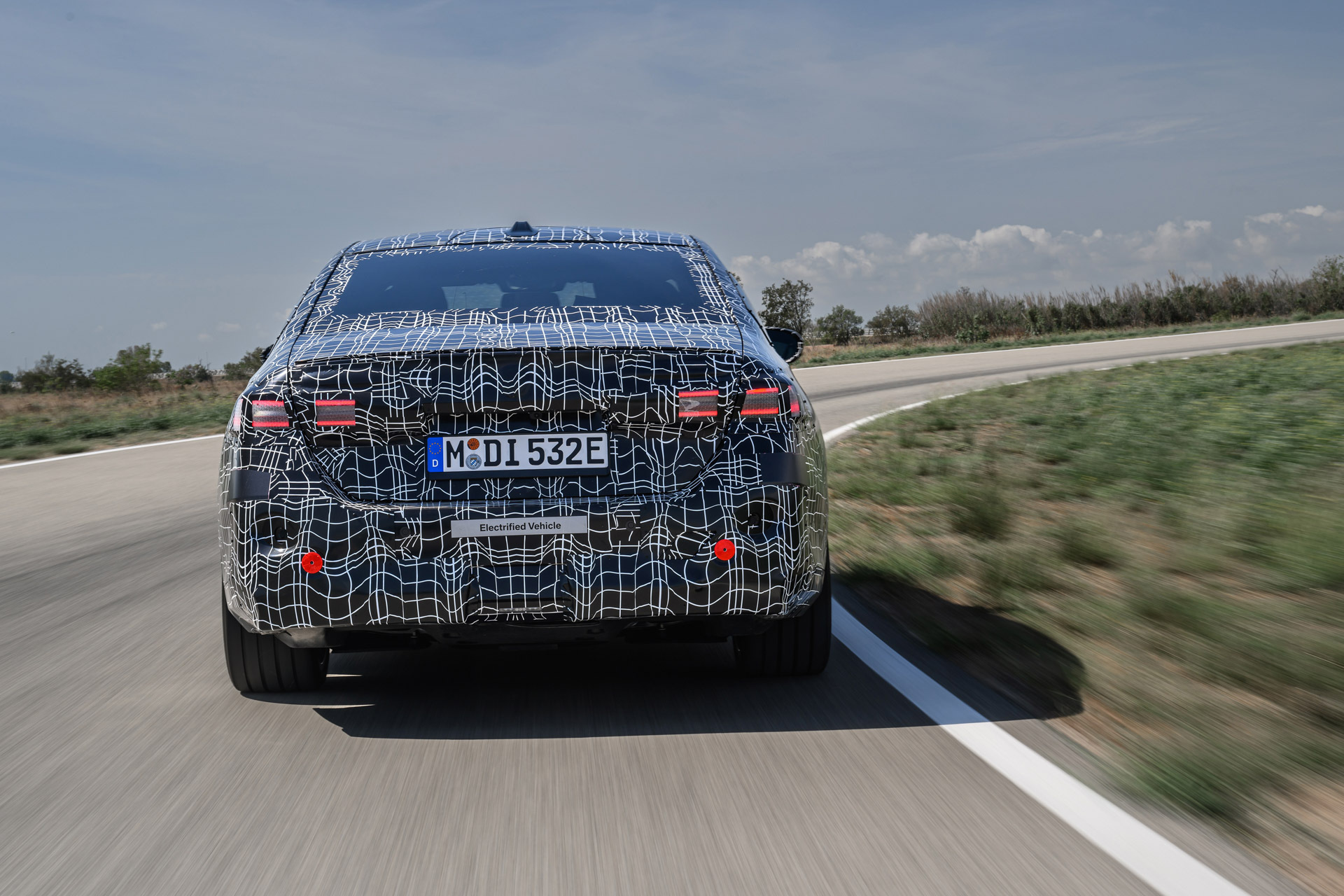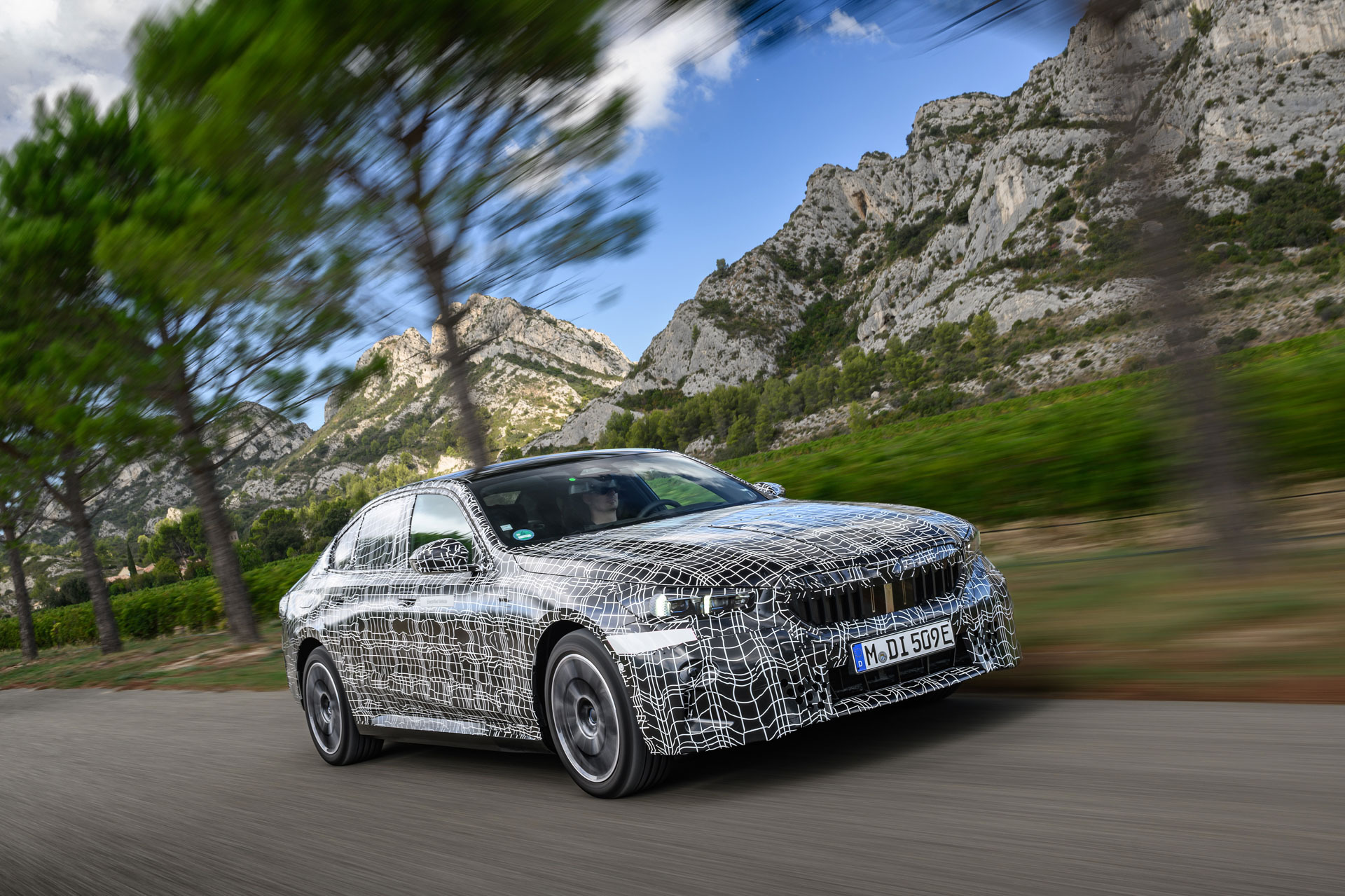Earlier this week we were introduced to the all-new 2024 Mercedes E-Class, a hugely important car in the luxury mid-size space. And later this year we’ll meet another one, the new BMW 5-Series.
But before BMW unwraps the G60 5-Series, it will unveil the electric version of that car, which we’ll see in only a matter of weeks. It’s called the i5 and is essentially a 5-Series with the combustion engine replaced by an electric motor or two. Apart from the design of the grille, the badging and the trim, we’re expecting the two cars to look almost identical. There’ll almost certainly be no change to the glass or body panels, or the interior.
BMW has already used that same philosophy to create the 7-Series and i7 that were launched last year, while the i4 is a 4-Series Gran Coupe with an EV heart . But it’s a philosophy that contrasts with the one being employed over at Mercedes on its E-Class and S-Class and their electric sister models. While the i5 and 5-Series are both based on an updated version of BMW’s CLAR architecture (the firm’s Neue Klasse platform won’t be ready until 2025), the EQE and newly-launched E-Class are built from entirely different bases and feature very different styling inside and out.
Related: BMW May Rename Its Entire Range For The EV Age According To New Trademarks

It’s worth pointing out that this philosophy isn’t set in stone. Mercedes also makes EVs like the EQA and EQB that are simply the GLA and GLB given EV conversions, and BMW has a standalone electric model in the form of the iX. But for the most part it seems that BMW believes we’ve passed the easy adopter phase, where the initial wave of EV fans wanted wacky futuristic designs to telegraph their combustion-free credentials to the rest of us, and customers now want EVs that look like regular cars.
There are advantages and disadvantages to both strategies. It must be more cost effective to build one car that can take two different power sources, as the new 5-Series can, and pushed to call it, we’d say the new ‘old-fashioned’ combustion E-Class is a better-looking car than the EQE. But one of the reasons the EQE looks a little odd is that it has a much longer wheelbase that’s made possible by only having to accommodate an electric powertrain, and delivers a ton of rear legroom as a consequence.
Which strategy do you think is right? Should BMW have made the i5 (seen in the gallery below) a standalone car that looks different to the 5-Series or did it make the right call to grow both cars from the same base? Leave a comment and let us know.














